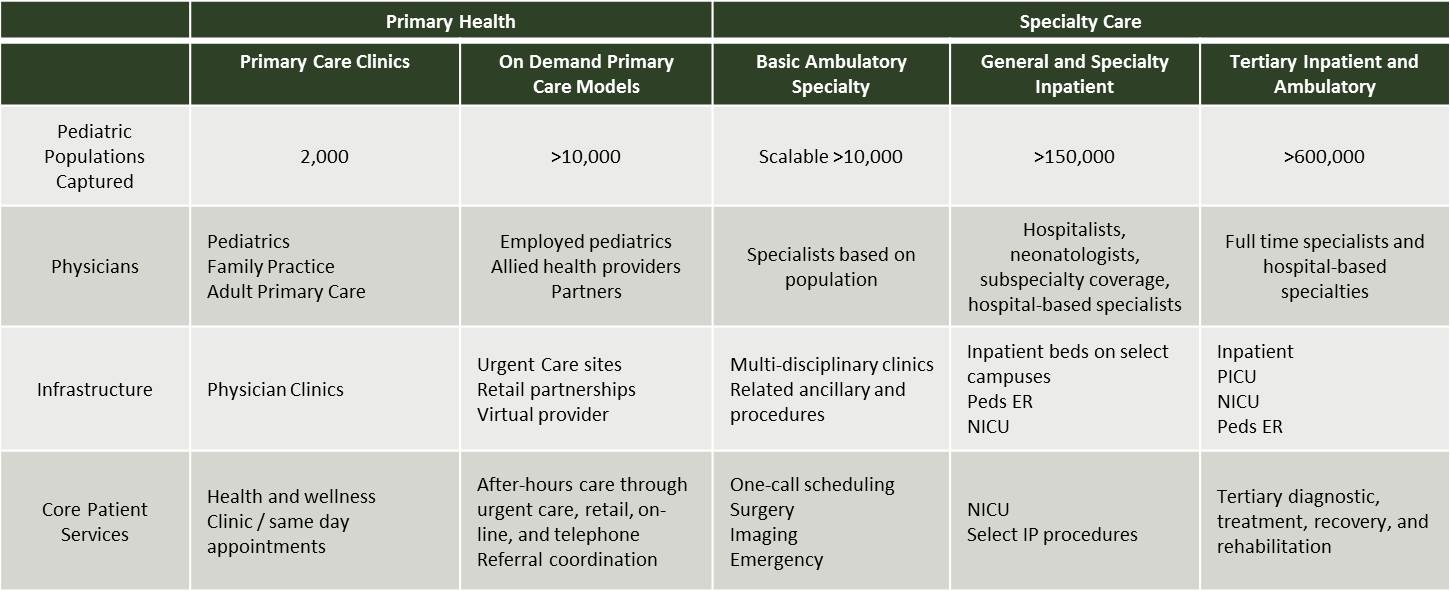Providing the highest quality care for children across the country is a fundamental mission of many community-based health systems, yet it is getting harder and harder. Volume declines, quality requirements, physician shortages, family engagement needs and the consolidation of care to the very largest stand alone institutions have created large barriers that many community based systems will having difficulty overcoming.
To lessen these barriers, community based systems need to define the role they want to play in delivering care for children, one of a primary health provider (wellness, prevention, basic diagnostic and treatment services) or one of a specialty care provider (advanced diagnostic and treatment services, chronic care). Determining the appropriate role is based on three major considerations.
First, health systems should look at the base they serve – how many children are in their market, who seek them out for some level of care. If the number of children is lower, the health system should focus on primary health needs of the populations – wellness, prevention, diagnostic care. If the number of children is higher, the system can look at ambulatory specialty or inpatient specialty services.
Second, health systems should look at their physician base – how many physicians and types of physicians they can organize in the market to provide accessible and timely care for kids. If the physician base is predominantly general pediatrics and family practice, the health systems should focus on primary health needs. If the physician base includes a range of specialties (numbers and types), the systems can focus on providing the specialty needs.
Third, health systems should think about the level of infrastructure investment and coordination they want to provide. If the health systems have a small asset base dedicated for children, they should focus on primary health services. If health systems want to invest heavily in assets (e.g. PICUs, NICUs, ORs, dedicated care teams, specialized lab, pharmacy, radiology, anesthesia), they can begin to think about offering a depth of specialty care for their kids.

By addressing these three considerations, community based health systems can determine the role they want to have in delivering care for children in their community and be realistic about the requirements needed to best advance that role.
Kate Lovrien and Luke C. Peterson are principals at Health System Advisors. They have more than 30 combined years advising senior healthcare leaders on their market and organizational strategy. They can be contacted at Kate.Lovrien@HealthSystemAdvisors.com or Luke.Peterson@HealthSystemAdvisors.com.
Health System Advisors is a strategy consultancy focused on advising leaders, advancing organizations, and transforming the healthcare industry. www.HealthSystemAdvisors.com.
The views, opinions and positions expressed within these guest posts are those of the author alone and do not represent those of Becker's Hospital Review/Becker's Healthcare. The accuracy, completeness and validity of any statements made within this article are not guaranteed. We accept no liability for any errors, omissions or representations. The copyright of this content belongs to the author and any liability with regards to infringement of intellectual property rights remains with them.

